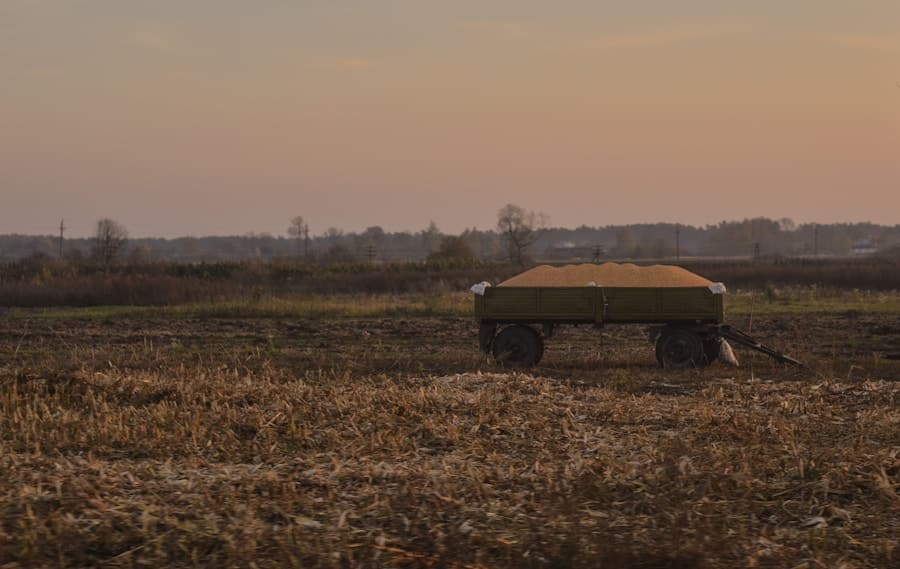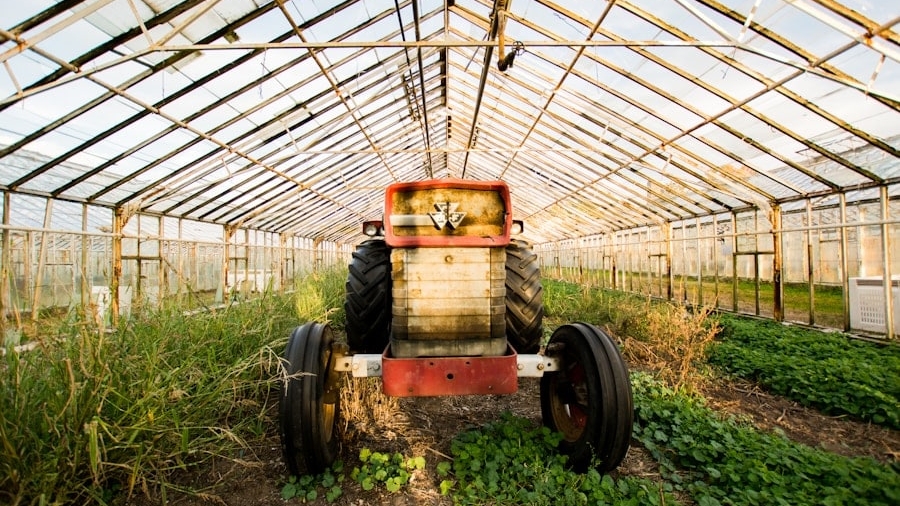The agricultural landscape is undergoing a significant transformation, driven by the advent of autonomous farming pods. These innovative systems, often resembling small, self-sufficient units, are designed to operate independently, utilizing advanced technologies to cultivate crops with minimal human intervention. The rise of these pods can be attributed to several factors, including the increasing demand for food due to a growing global population, the need for sustainable farming practices, and the labor shortages faced by traditional agriculture.
As farmers seek efficient solutions to meet these challenges, autonomous farming pods have emerged as a viable alternative. The concept of autonomous farming is not entirely new; however, recent advancements in robotics, artificial intelligence, and sensor technology have propelled these systems into the mainstream. Companies like Harvest Croo and Agrobotics are pioneering the development of these pods, which can plant, monitor, and harvest crops autonomously.
The integration of machine learning algorithms allows these systems to adapt to varying environmental conditions and optimize their operations accordingly. As a result, autonomous farming pods are not only enhancing productivity but also redefining the role of technology in agriculture.
Key Takeaways
- Autonomous farming pods are revolutionizing the agricultural industry by utilizing advanced technology to automate farming processes.
- The advantages of autonomous farming pods include increased efficiency, reduced labor costs, and optimized resource utilization.
- Technology and innovation in autonomous farming pods encompass AI, robotics, IoT, and data analytics to enhance productivity and decision-making.
- Challenges and limitations of autonomous farming pods include high initial investment, technical complexities, and potential job displacement.
- Autonomous farming pods have a positive environmental impact by minimizing water usage, reducing chemical inputs, and promoting sustainable farming practices.
Advantages of Autonomous Farming Pods
One of the most significant advantages of autonomous farming pods is their ability to increase efficiency in agricultural operations. These pods can operate around the clock, unaffected by weather conditions or labor availability. This continuous operation leads to higher yields and reduced time between planting and harvesting.
For instance, a single autonomous pod can manage multiple tasks simultaneously, such as planting seeds while monitoring soil moisture levels and applying fertilizers as needed. This multitasking capability streamlines the farming process and maximizes resource utilization. Moreover, autonomous farming pods contribute to precision agriculture, which focuses on optimizing field-level management regarding crop farming.
Equipped with advanced sensors and data analytics tools, these pods can collect real-time data on soil health, crop growth, and environmental conditions. This data-driven approach allows farmers to make informed decisions about irrigation, fertilization, and pest control, ultimately leading to healthier crops and reduced waste. By minimizing the use of chemicals and water through targeted applications, autonomous farming pods promote sustainable practices that benefit both the environment and the bottom line.
Technology and Innovation in Autonomous Farming Pods

The technological backbone of autonomous farming pods is a complex interplay of robotics, artificial intelligence, and IoT (Internet of Things) devices. At the heart of these systems are sophisticated robotic arms capable of performing delicate tasks such as planting seeds or harvesting ripe fruits without damaging the plants. These robots are often equipped with advanced vision systems that enable them to identify ripe produce and assess crop health through image recognition algorithms.
In addition to robotics, artificial intelligence plays a crucial role in enhancing the functionality of autonomous farming pods. Machine learning algorithms analyze vast amounts of data collected from various sensors to identify patterns and predict outcomes. For example, AI can forecast crop yields based on historical data and current environmental conditions, allowing farmers to plan their operations more effectively.
Furthermore, IoT devices facilitate seamless communication between different components of the farming pod, enabling real-time monitoring and control from remote locations.
Challenges and Limitations of Autonomous Farming Pods
Despite their numerous advantages, autonomous farming pods face several challenges that could hinder their widespread adoption. One significant limitation is the high initial investment required for these advanced systems. The cost of developing and deploying autonomous technology can be prohibitive for small-scale farmers who may not have access to sufficient capital.
This financial barrier can lead to a disparity in agricultural productivity between large agribusinesses that can afford such technology and smaller farms that cannot. Additionally, there are concerns regarding the reliability and robustness of autonomous systems in unpredictable agricultural environments. Factors such as varying soil types, weather conditions, and pest infestations can pose challenges that require human intuition and experience to navigate effectively.
While technology continues to improve, there remains a level of uncertainty about how well these systems can adapt to unforeseen circumstances without human oversight. This limitation raises questions about the long-term viability of fully autonomous farming operations.
Environmental Impact of Autonomous Farming Pods
The environmental implications of autonomous farming pods are a double-edged sword. On one hand, these systems have the potential to significantly reduce the ecological footprint of agriculture by promoting sustainable practices. For instance, precision agriculture techniques employed by autonomous pods can lead to decreased water usage and lower chemical inputs.
By applying fertilizers and pesticides only when necessary and in precise amounts, farmers can minimize runoff into nearby waterways, thereby protecting local ecosystems. On the other hand, the production and deployment of autonomous farming pods themselves carry environmental costs. The manufacturing process for these high-tech systems often involves resource-intensive materials and energy consumption.
Additionally, as agriculture becomes increasingly mechanized, there is a risk that traditional farming practices may be abandoned altogether, leading to a loss of biodiversity and cultural heritage associated with small-scale farming methods. Balancing technological advancement with environmental stewardship will be crucial in ensuring that autonomous farming pods contribute positively to sustainable agriculture.
Economic Considerations for Autonomous Farming Pods

The economic landscape surrounding autonomous farming pods is complex and multifaceted. While the initial investment may be substantial, proponents argue that the long-term savings in labor costs and increased efficiency can offset these expenses over time. For instance, a study conducted by the University of California found that farms utilizing autonomous technology could reduce labor costs by up to 30%, allowing farmers to allocate resources more effectively.
However, the economic benefits are not uniformly distributed across all types of farms. Large agribusinesses with access to capital are more likely to invest in autonomous technology than smallholder farms that may struggle to secure financing. This disparity could exacerbate existing inequalities within the agricultural sector, leading to a concentration of wealth and resources among a few large players while smaller farms face increasing challenges in competing.
Future Developments and Trends in Autonomous Farming Pods
As technology continues to evolve at a rapid pace, the future of autonomous farming pods looks promising yet uncertain. One emerging trend is the integration of artificial intelligence with blockchain technology to enhance transparency and traceability in agricultural supply chains. By recording every step of the farming process on a decentralized ledger, stakeholders can ensure food safety and quality while also providing consumers with verifiable information about the origins of their food.
Another trend is the development of hybrid models that combine human expertise with autonomous systems. Rather than fully replacing human labor, future autonomous farming pods may serve as tools that augment traditional farming practices. This collaborative approach could leverage the strengths of both technology and human intuition, leading to more resilient agricultural systems capable of adapting to changing conditions.
The Role of Autonomous Farming Pods in Sustainable Agriculture
Autonomous farming pods hold significant potential for advancing sustainable agriculture by promoting practices that prioritize environmental health and resource efficiency. By utilizing precision agriculture techniques, these systems can help reduce waste and optimize inputs such as water and fertilizers. This not only benefits farmers economically but also contributes to broader sustainability goals by minimizing agriculture’s impact on natural ecosystems.
Furthermore, as consumer demand for sustainably produced food continues to rise, autonomous farming pods can play a pivotal role in meeting this demand while maintaining productivity levels. By enabling farmers to adopt more efficient practices without sacrificing yield or quality, these innovative systems can help bridge the gap between modern agricultural demands and sustainable practices. As we look toward the future of food production, it is clear that autonomous farming pods will be integral in shaping a more sustainable agricultural landscape that meets the needs of both people and the planet.
In a related article, Exploring the Features of the Samsung Galaxy Book Odyssey, the advancements in technology are highlighted, showcasing how innovative devices like the Samsung Galaxy Book Odyssey are shaping the future. Just as autonomous farming pods are revolutionizing crop cultivation, cutting-edge gadgets like the Galaxy Book Odyssey are pushing the boundaries of what is possible in the tech world. Both articles demonstrate the exciting possibilities that arise when technology is used to enhance efficiency and productivity in various industries.
FAQs
What are autonomous farming pods?
Autonomous farming pods are self-contained, mobile units equipped with advanced technology to autonomously cultivate crops. These pods are designed to operate without the need for human intervention, using sensors, robotics, and AI to manage the entire cultivation process.
How do autonomous farming pods work?
Autonomous farming pods utilize a combination of technologies such as GPS, machine learning, and robotic arms to plant, monitor, and harvest crops. They are programmed to analyze environmental conditions, apply fertilizers and pesticides as needed, and optimize crop growth without human involvement.
What are the benefits of autonomous farming pods?
Autonomous farming pods offer several benefits, including increased efficiency in crop cultivation, reduced labor costs, and the ability to operate in remote or challenging environments. They also have the potential to minimize the use of resources such as water and fertilizers, leading to more sustainable farming practices.
What are the potential challenges of autonomous farming pods?
Challenges associated with autonomous farming pods include the initial investment cost, technological limitations, and potential resistance from traditional farming practices. Additionally, there may be regulatory and safety concerns that need to be addressed as this technology becomes more widespread.
What is the future outlook for autonomous farming pods?
The future of autonomous farming pods looks promising, with ongoing advancements in technology and increasing interest in sustainable and efficient farming practices. As the technology continues to evolve, it is expected to play a significant role in the future of agriculture, offering solutions to various challenges faced by the industry.

